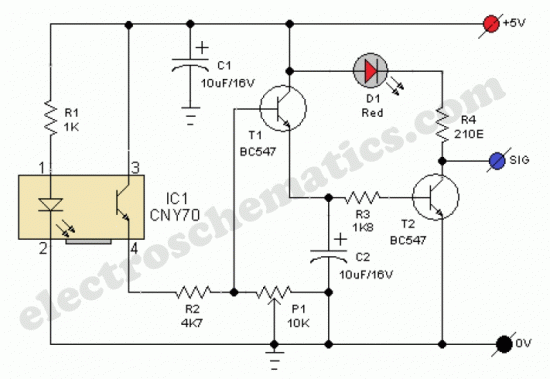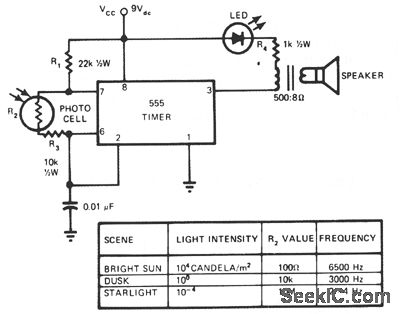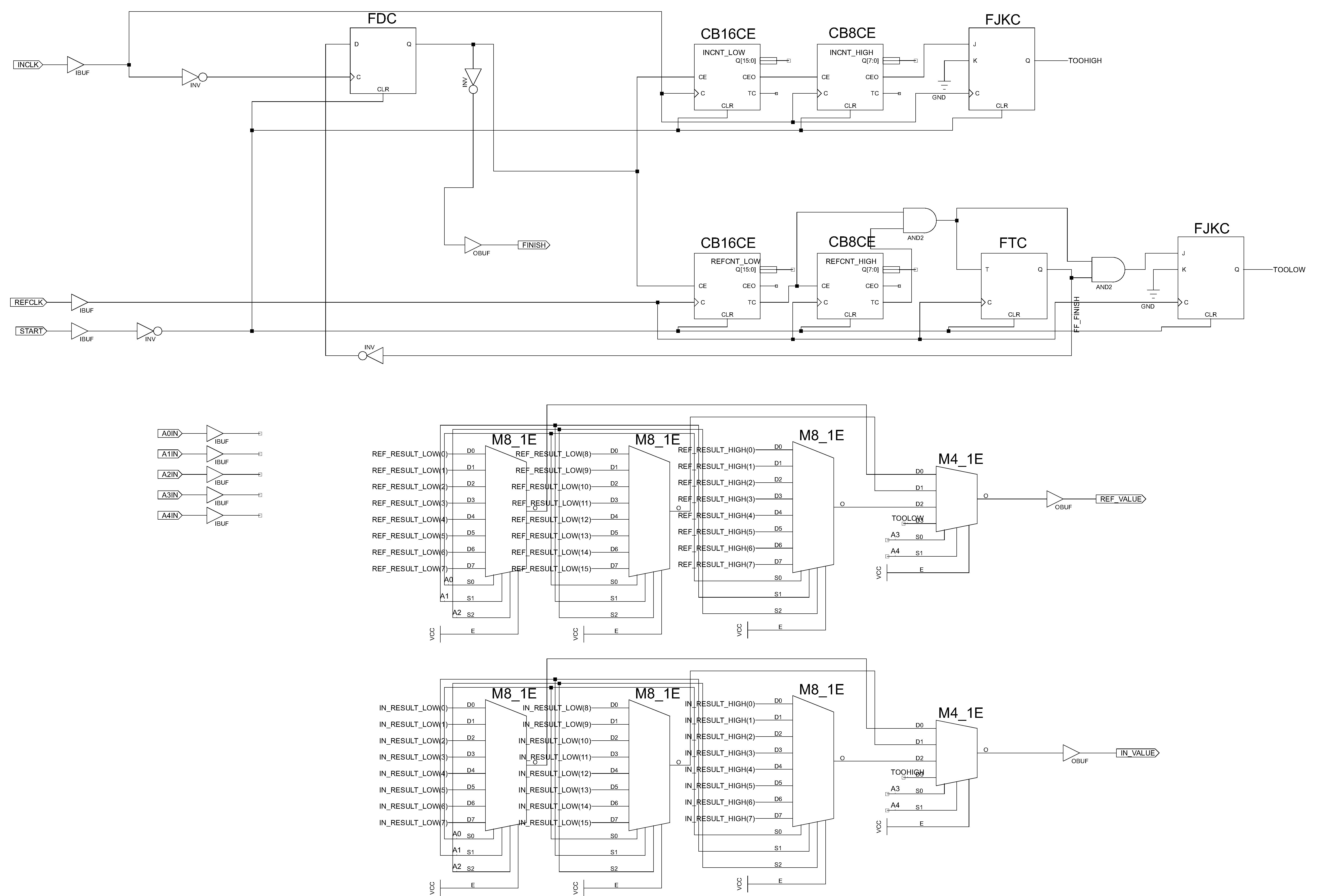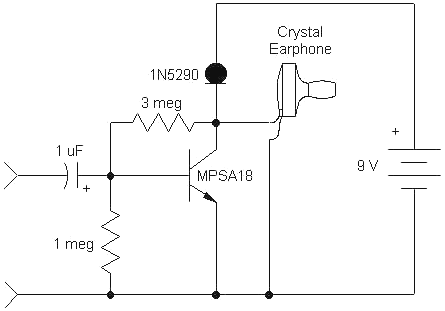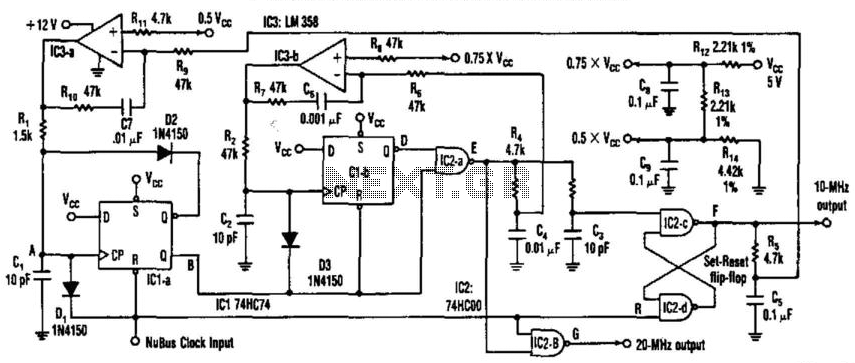
Stable low frequency crystal oscillator
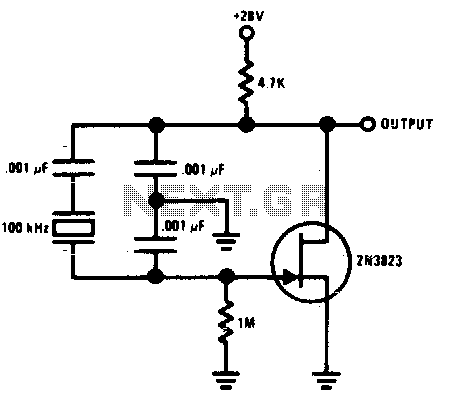
This Colpitts crystal oscillator is ideal for low-frequency crystal oscillator circuits. Excellent stability is assured because the 2N3823 JFET circuit loading does not vary with temperature.
The Colpitts crystal oscillator is a type of electronic oscillator that utilizes a combination of capacitors and an inductor to create oscillations at a specific frequency determined by the crystal's characteristics. The circuit typically includes a transistor, in this case, the 2N3823 JFET, which serves as the active component to amplify the oscillations.
In a standard configuration, the Colpitts oscillator employs a tank circuit formed by two capacitors and an inductor connected in series or parallel with the crystal. The crystal provides frequency stability and defines the oscillation frequency, which is critical for applications requiring precise timing. The use of the 2N3823 JFET is advantageous due to its high input impedance, allowing for minimal loading on the crystal. This feature is particularly important in low-frequency applications where variations in loading can significantly affect performance.
The circuit operates by feeding back a portion of the output signal to the input through the tank circuit, which sustains oscillations. The feedback network is designed to ensure that the phase shift around the loop is 360 degrees, which is a requirement for sustained oscillation. Additionally, the temperature stability of the 2N3823 JFET ensures that the performance of the oscillator remains consistent across varying environmental conditions, making it suitable for applications in telecommunications, signal generation, and other electronic systems where reliable frequency generation is essential.
The design can be further optimized by selecting appropriate values for the capacitors and inductor in the tank circuit, as well as ensuring that the power supply is stable to avoid fluctuations in the output frequency. Overall, the Colpitts crystal oscillator using the 2N3823 JFET is a robust solution for low-frequency oscillation needs, providing excellent performance and reliability.This Colpitis-crystal oscillator is ideal for low frequency crystal oscillator circuits Excellent stability is assured because the 2N3823 JFET circuit loading does not vary with temperature. 🔗 External reference
The Colpitts crystal oscillator is a type of electronic oscillator that utilizes a combination of capacitors and an inductor to create oscillations at a specific frequency determined by the crystal's characteristics. The circuit typically includes a transistor, in this case, the 2N3823 JFET, which serves as the active component to amplify the oscillations.
In a standard configuration, the Colpitts oscillator employs a tank circuit formed by two capacitors and an inductor connected in series or parallel with the crystal. The crystal provides frequency stability and defines the oscillation frequency, which is critical for applications requiring precise timing. The use of the 2N3823 JFET is advantageous due to its high input impedance, allowing for minimal loading on the crystal. This feature is particularly important in low-frequency applications where variations in loading can significantly affect performance.
The circuit operates by feeding back a portion of the output signal to the input through the tank circuit, which sustains oscillations. The feedback network is designed to ensure that the phase shift around the loop is 360 degrees, which is a requirement for sustained oscillation. Additionally, the temperature stability of the 2N3823 JFET ensures that the performance of the oscillator remains consistent across varying environmental conditions, making it suitable for applications in telecommunications, signal generation, and other electronic systems where reliable frequency generation is essential.
The design can be further optimized by selecting appropriate values for the capacitors and inductor in the tank circuit, as well as ensuring that the power supply is stable to avoid fluctuations in the output frequency. Overall, the Colpitts crystal oscillator using the 2N3823 JFET is a robust solution for low-frequency oscillation needs, providing excellent performance and reliability.This Colpitis-crystal oscillator is ideal for low frequency crystal oscillator circuits Excellent stability is assured because the 2N3823 JFET circuit loading does not vary with temperature. 🔗 External reference
